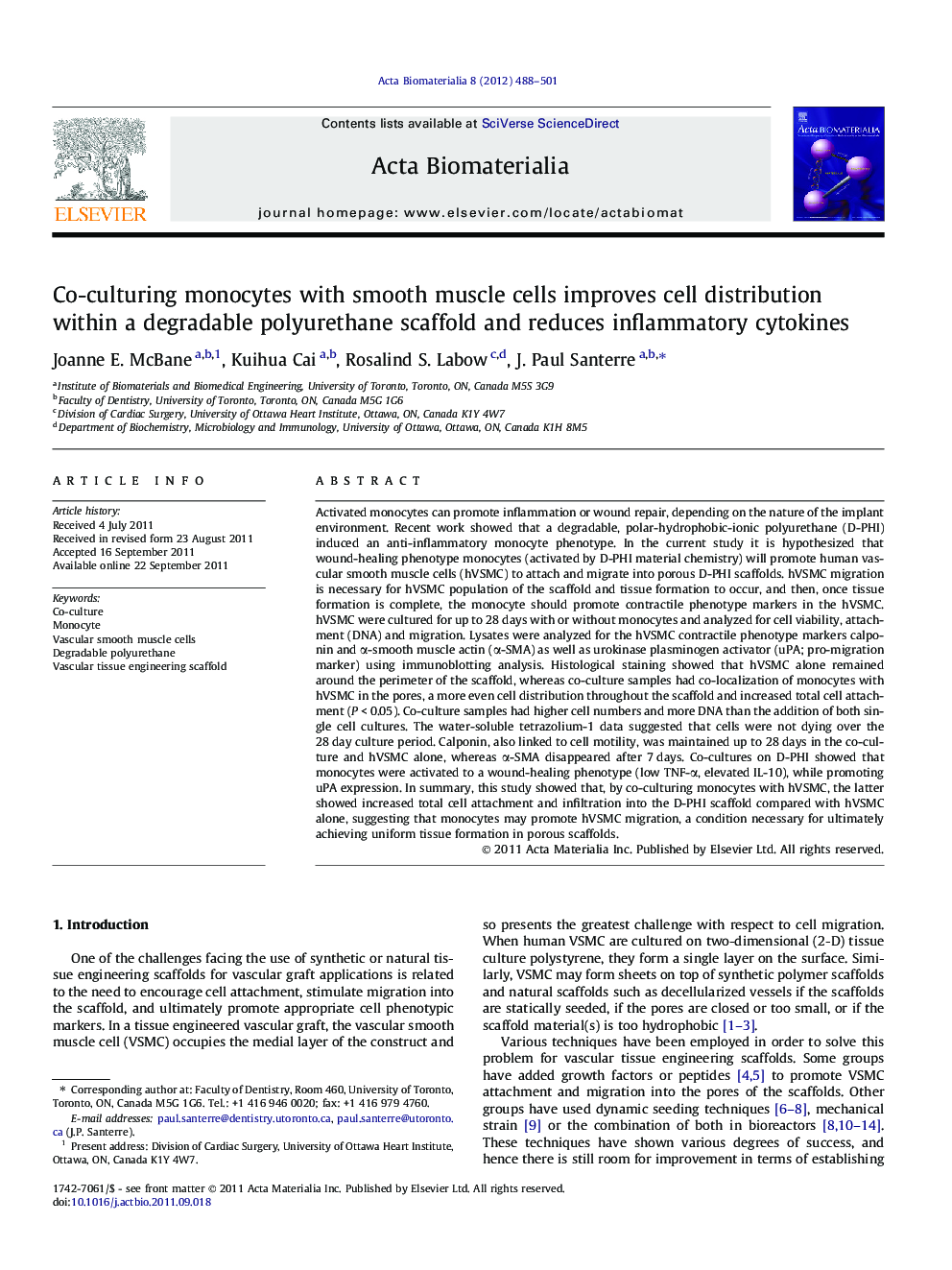| کد مقاله | کد نشریه | سال انتشار | مقاله انگلیسی | نسخه تمام متن |
|---|---|---|---|---|
| 1449 | 84 | 2012 | 14 صفحه PDF | دانلود رایگان |

Activated monocytes can promote inflammation or wound repair, depending on the nature of the implant environment. Recent work showed that a degradable, polar-hydrophobic-ionic polyurethane (D-PHI) induced an anti-inflammatory monocyte phenotype. In the current study it is hypothesized that wound-healing phenotype monocytes (activated by D-PHI material chemistry) will promote human vascular smooth muscle cells (hVSMC) to attach and migrate into porous D-PHI scaffolds. hVSMC migration is necessary for hVSMC population of the scaffold and tissue formation to occur, and then, once tissue formation is complete, the monocyte should promote contractile phenotype markers in the hVSMC. hVSMC were cultured for up to 28 days with or without monocytes and analyzed for cell viability, attachment (DNA) and migration. Lysates were analyzed for the hVSMC contractile phenotype markers calponin and α-smooth muscle actin (α-SMA) as well as urokinase plasminogen activator (uPA; pro-migration marker) using immunoblotting analysis. Histological staining showed that hVSMC alone remained around the perimeter of the scaffold, whereas co-culture samples had co-localization of monocytes with hVSMC in the pores, a more even cell distribution throughout the scaffold and increased total cell attachment (P < 0.05). Co-culture samples had higher cell numbers and more DNA than the addition of both single cell cultures. The water-soluble tetrazolium-1 data suggested that cells were not dying over the 28 day culture period. Calponin, also linked to cell motility, was maintained up to 28 days in the co-culture and hVSMC alone, whereas α-SMA disappeared after 7 days. Co-cultures on D-PHI showed that monocytes were activated to a wound-healing phenotype (low TNF-α, elevated IL-10), while promoting uPA expression. In summary, this study showed that, by co-culturing monocytes with hVSMC, the latter showed increased total cell attachment and infiltration into the D-PHI scaffold compared with hVSMC alone, suggesting that monocytes may promote hVSMC migration, a condition necessary for ultimately achieving uniform tissue formation in porous scaffolds.
Journal: Acta Biomaterialia - Volume 8, Issue 2, February 2012, Pages 488–501